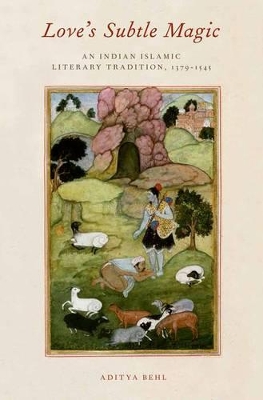Oxford Scholarship Online
1 total work
The encounter between Muslim and Hindu remains one of the defining issues of South Asian society today. This encounter began as early as the 8th century, and the first Muslim kingdom in India would be established at the end of the 12th century. This powerful kingdom, the Sultanate of Delhi, eventually reduced to vassalage almost every independent kingdom on the subcontinent. In Love's Subtle Magic, a remarkable and deeply original book, Aditya Behl uses a
little-understood genre of Sufi literature to paint an entirely new picture of the evolution of Indian culture during the earliest period of Muslim domination. These curious romantic tales transmit a deeply serious religious message through the medium of lighthearted stories of love. Although composed in the
Muslim courts, they are written in a vernacular Indian language. Until now, they have defied analysis, and been mostly ignored by scholars east and west. Behl shows that the Sufi authors of these charming tales purposely sought to convey an Islamic vision via an Indian idiom. They thus constitute the earliest attempt at the indigenization of Islamic literature in an Indian setting. More important, however, Behl's analysis brilliantly illuminates the cosmopolitan and composite culture of the
Sultanate India in which they were composed. This in turn compels us completely to rethink the standard of the opposition between Indian Hindu and foreign Muslim and recognize that the Indo-Islamic culture of this era was already significantly Indian in many important ways.
little-understood genre of Sufi literature to paint an entirely new picture of the evolution of Indian culture during the earliest period of Muslim domination. These curious romantic tales transmit a deeply serious religious message through the medium of lighthearted stories of love. Although composed in the
Muslim courts, they are written in a vernacular Indian language. Until now, they have defied analysis, and been mostly ignored by scholars east and west. Behl shows that the Sufi authors of these charming tales purposely sought to convey an Islamic vision via an Indian idiom. They thus constitute the earliest attempt at the indigenization of Islamic literature in an Indian setting. More important, however, Behl's analysis brilliantly illuminates the cosmopolitan and composite culture of the
Sultanate India in which they were composed. This in turn compels us completely to rethink the standard of the opposition between Indian Hindu and foreign Muslim and recognize that the Indo-Islamic culture of this era was already significantly Indian in many important ways.
